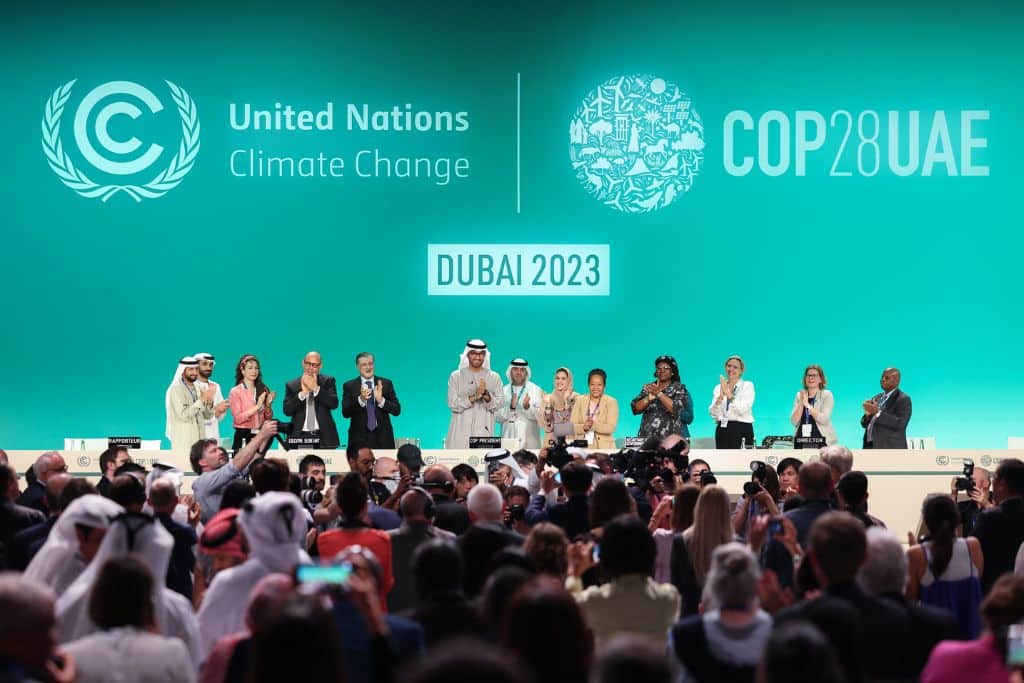The health of our planet is undeniably in peril. Current linear economic models overlook the intrinsic interconnectedness of humanity with the Earth’s foundational elements: water, soil, air, energy, and space. As a result, each of these elements has been degraded, leading to climate crises and biodiversity loss. If humanity is to survive and thrive, a new economic framework is urgently needed; one that restores the health of our planet by reorienting existing systems.
—
In 1937, US President Franklin Roosevelt wrote to all the US State Governors: “The nation that destroys its soil, destroys itself.” Today, there is unanimous consensus that the health of our planet is in peril. It is therefore essential that we properly care for the five foundational elements that constitute planet Earth: water, soil, air, energy (fire), and space. All life forms are composed of these elements. Thus, it is logical to conclude that nurturing these foundational elements will not only ensure a healthy planet but also foster a prosperous economy.
Traditional economic models – capitalism, socialism, communism, or mixed economic systems – have historically treated humans as separate from their environment, rather than recognizing their interdependence with it. This flawed approach has perpetuated economic and educational systems that exploit these foundational elements, leading to environmental degradation, climate change, and biodiversity loss. This grim reality is well-documented by renowned environmentalist Johan Rockström and his team, who have shown that humanity has breached six of the nine planetary boundaries, with the remaining three on the verge of being crossed.
To avert further environmental degradation, a radical shift in our thinking is required. Below is a proposed economic framework – not by starting anew, but by reorienting existing systems. This practical, bottom-up approach aims for minimal disruption and can be adopted by any country. While various well-intentioned top-down solutions like initiatives on creating a circular economy, carbon credits, and tax incentives exist, they are only incremental in nature.
You might also like: Toward a New Global Approach to Safeguard Planet Earth: An Interview With Johan Rockström
Principles for Implementing an Economic Model for Planetary Health and Prosperity
1. Need for an Environmental Health Index (EHI)
All countries, as well as our planet, need a new measure: the Environmental Health Index (EHI). This index would capture the health of the five foundational elements at both national and global levels. EHI will complement the Gross Domestic Product (GDP), which currently ignores the health of these elements.
More on the topic: Planetary Health: Measuring and Managing Planetary Biomarkers
2. Organize government ministries by the five foundational elements
When government ministries are organized around the five foundational elements, they become more sensitive, aware, and synergistic in addressing environmental challenges. For instance, a Ministry of Water would ensure that wastewater is not dumped into oceans, which would adversely impact the EHI. This could collaborate with the Ministry of Soil to address groundwater depletion caused by fossil-based materials on roads and highways to arrive at better material solutions. A shared vision and mission would compel each ministry to work together and continuously improve the EHI.
3. Adopting an indirect tax model to promote prosperity and health
Countries should transition their tax systems from direct to indirect taxation, using a five-tier structure, with the lowest tier at 0% tax and the highest at 40%. Environmentally unfriendly products would fall in the higher tiers, eco-friendly ones in the lower tiers. Countries could adjust product placement within these tiers based on economic considerations and the pace of emergence of clean start-ups. Taxes would be collected only at the point of final consumption, thereby influencing consumer behaviour.
India already has a similar indirect tax model, the Goods and Services Tax (GST) model. The GST indirect tax structure is uniform across the country. While the current focus of GST is on affordability, its mission could be fine-tuned to align with sustainability goals. In this manner, it could become a model for other countries to emulate.
This tax model would spur innovation and phase out products that damage the environment, reducing the need for subsidies, tax incentives, and reforms. The GST model uses an expanded version of the Harmonized System of Product Classification, with an 8-digit code instead of the traditional 6-digit code, allowing for detailed product differentiation. For example, a plastic water bottle could fall into the highest tax tier, while canned water might be in a lower tier. Similarly, a bag of chemical fertilizer could be in a higher tier and a bag of organic fertilizer in a lower tier.
Government ministries, organized by the five foundational elements, could collaborate with the Ministry of Finance to determine product placements annually. It is recommended that 60-70% of taxes be collected through indirect taxes and 30-40% through direct taxes on corporations and wealthy individuals. This model ensures sustainable practices and clean growth while accelerating a culture of clean start-ups. For example, several clean start-ups exist to replace all fossil-based plastics; lab inventions such as cotton, diamonds, microbes extracting precious metals from gadgets and so on will lower carbon dioxide emissions, saving large amounts of land and water.
The indirect tax model paves the way for a rapid take-off of all clean technologies. Today, they languish for a variety of structural reasons.
4. Orienting education around the five foundational elements
True education encompasses the development of the body, mind, and soul. Within the scope of this essay, it is recommended that degree-granting institutions and vocational schools structure their programs around the five foundational elements. For example, material sciences, agricultural sciences, and other fields directly connected to the element “soil” could fall under this category. While liberal arts, medical degrees, and other programs not directly connected with any of the foundational elements may retain their standalone status, they should still be influenced by the foundational elements. Vocational institutes should follow a similar theme.
Schools should also teach climate science and biology concepts in relation to the five foundational elements. For instance, it is well known that meat grown for food, especially beef, has a high carbon footprint compared to plant-based food. Moreover, biology reveals that humans are naturally plant-eaters.
Education should emphasize sustainable practices rather than prolonged academic journeys for students.
More on the topic: Traditional Education Is Failing Us. Here’s What We Need for a Sustainable Planet
5. Agenda for the Conference of Parties (COP)
COP members should discuss and agree on the above principles. They should also consider reducing their defense budgets by 10% annually compared to the previous year. These savings must be directed towards implementing nature-based solutions and growing forests on degraded land.

6. Corporations, Government, and ESG (Environment, Sustainability, Governance)
Corporations and national and state governments should publicly disclose their high-level initiatives related to the five foundational elements. Governments should transparently declare revenue collection and expenditure by major categories, and government finances should be audited, similar to corporate audits.
7. Suggestion to dampen energy-intensive tools such as AI and cryptocurrencies
Artificial Intelligence (AI) will account for 6% of total power use in the US by 2026, according to Forbes. This is expected to increase rapidly in the coming years, as Goldman Sachs predicts global AI investment to reach $1 trillion. Abundant literature on the internet highlights the significant use of energy and fresh water by AI. Cryptos like Bitcoin use as much energy as a small country in Scandinavia. It is assumed that utility companies offer volume-based or higher prices at higher tiers to the tech companies – one hopes that customers are not subsidizing the high energy consumption of AI.
AI companies like ChatGPT should charge customers based on the amount of energy units used. This may vary by simple or complex types of use. The logic is similar to Uber or Lyft charging customers for a specific ride. A similar concept should apply to cryptocurrencies. This will dampen demand, and AI will be used more judiciously.
This win-win approach will make companies profitable, encourage students to rely more on their creative talents, and protect the planet. Government debates should focus more on the energy and water use of AI and cryptos, among other pressing issues. Growth in renewable energy will not keep up with the exponential growth of AI, thus warranting action by governments.
–
In summary, every citizen and institution of the world must see their interconnectedness with the foundational elements and not abuse them. It is we the people who control our planet’s destiny. More action and less debate is necessary in this world since time is running out.















